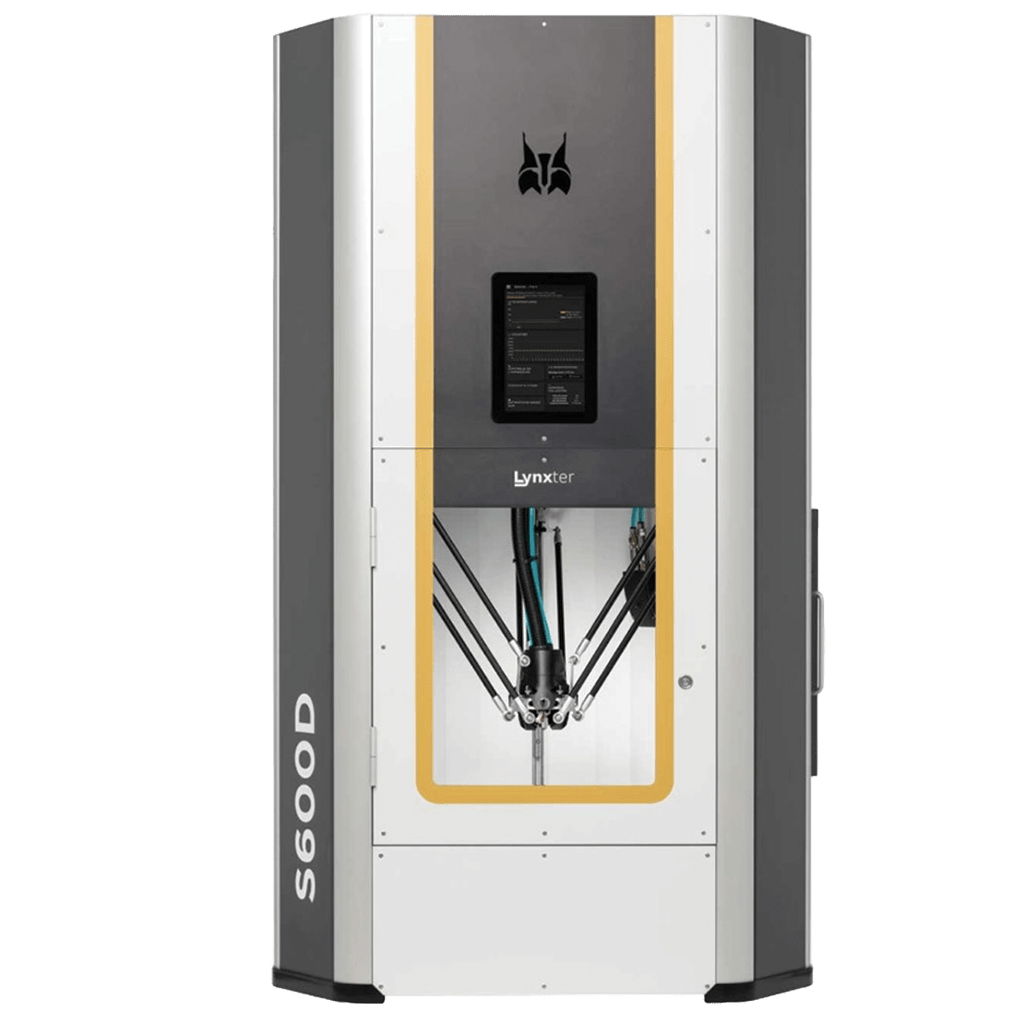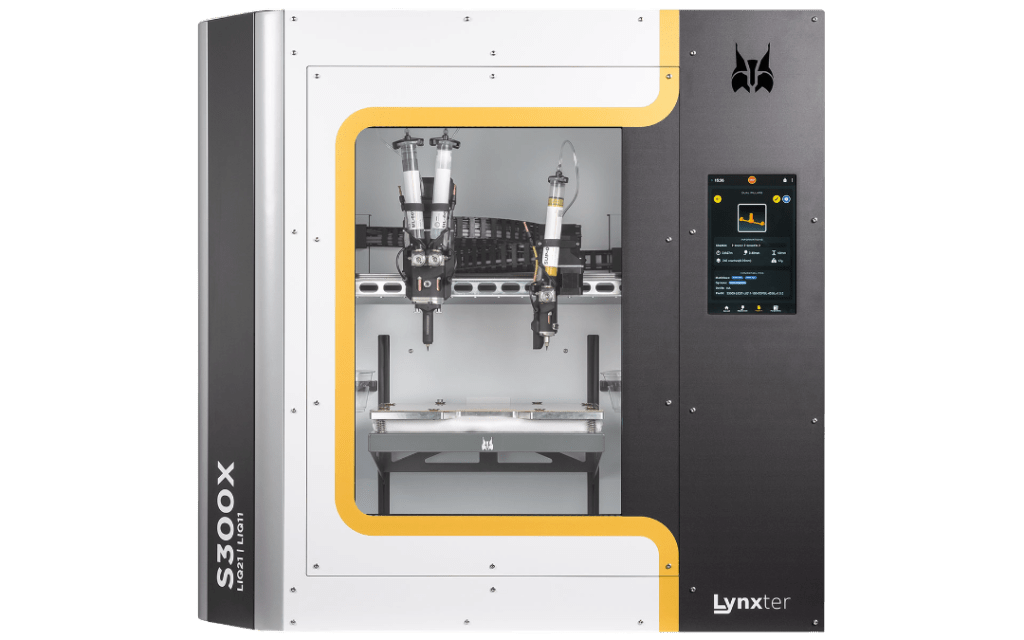A silicone 3D printer can create patient-matched devices once deemed too complex or costly. Hospitals now turn digital scans into functional silicone parts within hours, cutting traditional manufacturing delays while improving anatomical fit.
Variable-hardness, 3D-printable silicones (5-50 ShA) perfectly match different body tissues, from soft wound contacts to firm orthotic supports.
A use case for this is medical facilities that print custom orthopaedic insoles, prosthetic interfaces, and anatomical models that conform precisely to patient measurements with mechanical characteristics comparable to injection moulding.
Lynxter’s S600D shows what’s possible today with swappable toolheads (LIQ11, LIQ21) for multiple silicone types. In total, Lynxter offers four silicones:
- Silicone RTV2 10 ShA
- Silicone RTV2 25 ShA
- Silicone RTV2 40 ShA
- Silicone RTV2 50 ShA
Join us below to discover how 3D printed silicone is finding its way into countless healthcare applications.
The Lynxter Silicone 3D Printer Range
Lynxter has two 3D printers that support RTV2 silicone (5, 10, 25, 40 ShA), certified for skin contact per ISO 10993-05:
The S600D

The S600D has a modular design with swappable tool heads for filament, liquid (silicone), or paste materials. Its heated chamber reaches 80°C with a 390mm x 600mm build volume and 12.5μm resolution for highly detailed builds.
It supports standalone operation via touchscreen or remote control via its web interface, with material runout detection and hot-swappable build plates.
The S300X

The S300X uses IDEX technology with dual independent extruders for silicone printing. LIQ21 handles two-component RTV2 silicones, with an X, Y, Z resolution of 12.5μm, 12.5μm, 12.5μm, while LIQ11 prints water-soluble supports.
The printer includes volumetric dosage pumps, 300x250x200mm build volume, and 50μm to 1mm layer height capability. HEPA H14 filtration protects materials in its sealed chamber.
What’s the difference?
The S300X uses true IDEX (Independent Dual Extrusion) architecture, with both tool heads permanently mounted for simultaneous operation.
The S600D requires manual tool head swapping between prints, which gives flexibility but lacks the S300X’s ability to print support and model materials concurrently.
Build volume also separates these machines, with the S600D offering ⌀390mm x 600mm compared to the S300X’s 300 x 250 x 200mm capacity. The S600D can print larger parts or more pieces simultaneously, while the S300X takes up less space.
3D printable silicone use cases in healthcare
Prosthetic interfaces
Socket liners now match limb shapes perfectly without the mess and discomfort of plaster casting. One print delivers soft cushioning under bones and firm support elsewhere, typically requiring two materials glued together.
Facial prostheses
Face parts print directly from scan data, skipping the unpleasant mould-making process against sensitive facial tissues. Design changes happen digitally before printing rather than through the physical cutting and reshaping of finished products.
Surgical supports
Body-matched positioning tools print from scan data without waiting days for custom moulds. Surgeons test several designs before surgery rather than discovering fit problems during the procedure.
Paediatric orthotics
As children grow, their support devices scale up digitally without starting the measurement process from scratch. Minor design modifications print in hours rather than requiring weeks of hand fabrication and multiple fitting appointments.
Medical equipment protection
Hospital equipment faces frequent impacts against walls, doorframes and other devices during rushed emergencies. Printed silicone bumpers conform perfectly to complex equipment shapes with cutouts for ports while maintaining functionality.
Why traditional extrusion printers fail with silicone
Standard 3D printers push solid filaments past heated nozzles until melting occurs for material deposition. Silicone never truly melts and cures via chemical reaction, making filament-based systems incompatible with its chemistry.
RTV silicones start flowing immediately after mixing and continue curing throughout printing, requiring precise volumetric dosing mechanisms.
You need specialised pumps that manage component ratios perfectly while preventing premature curing inside delivery tubes.
Temperature control becomes critical as heat accelerates curing speed, potentially blocking nozzles mid-print or changing material flexibility in finished parts.
Unlike standard printers, Lynxter machines use specialised pumps that mix silicone components at the nozzle tip. Your prints work because silicone never sits mixed in tubes long enough to harden and block the system.
Is silicone 3D printing in healthcare worth it?
Silicone 3D printers are no small investment, but the potential to improve patient outcomes, raise healthcare standards, and solve legitimate problems around manufacturing and sourcing makes them worthy of consideration.
Hospitals, healthcare providers, and medical device manufacturers can benefit from silicone 3D printing with a Lynxter device. Call us on 01765 694 007 if you’re interested in finding out more.
Image credits: Lynxter



